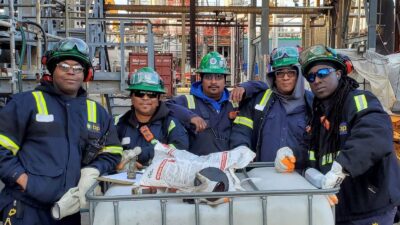Few industries are as cyclical as the oil & gas sector, which can be awful for shareholders on the way down but offer great opportunities for patient investors to buy great companies at depressed prices. Royal Dutch Shell (LSE: RDSB) is one company that continues to perform well with low oil prices, yet shares trade 34% lower than they did two years ago. In Q1, Shell posted a $814m profit on a current cost of supplies basis, Shell’s preferred profit metric, although this was down from $4.7bn this time last year. But with average prices per barrel of oil sold just $29 in Q1, Shell’s ability to remain in the black is a testament to its low-cost-of-production assets and diversified downstream portfolio.
Shell also took advantage of plummeting crude prices to acquire competitor BG for $54bn. While the deal was struck while crude was in the $60/bbl range, a large portion was paid in Shell shares and BG does bring an array of world-class oil & gas assets to the combined company. Shell is now the world’s largest commercial supplier of liquefied natural gas, which should see increased demand in the years ahead as governments around the world mandate switching to cleaner burning fuels. Combined with a core company that’s still profitable while selling oil at $29/bbl and pays a 7%-plus yielding dividend, Shell could be a bargain at today’s prices.
Debt woes
Kazakh copper miner Kaz Minerals (LSE: KAZ) invested heavily during the commodity boom years in major new copper mines designed to take advantage of voracious Chinese demand. However, now that this demand is slowing, worldwide supply is still increasing and copper fetches half of what it did five year ago, Kaz could be looking at a prolonged downturn despite a bevy of low-cost assets.
The problem for Kaz is the $2.4bn in net debt on its books that’s an astounding 12 times 2015 EBITDA. It’s little surprise that the company has already begun talks with its creditors over what will happen if copper prices don’t rise precipitously and it breaches debt covenants later this year. While capex spending will fall dramatically once new mines come online in the next two years, Kaz is one to avoid unless you believe copper prices will rise significantly in the medium term.
Staying on the sidelines
Shares of Ophir Energy (LSE: OPHR) have plummeted over the past two years as the company’s solid exploratory efforts haven’t turned into successful commercial ventures. The news that Franco-American oil services giant Schlumberger had pulled out of a deal to forward-fund Ophir’s LNG field off the coast of Equatorial Guinea was a massive blow late last month. Ophir is still going ahead with this massive Fortuna Project but will now either have to fund Fortuna itself or, more likely, scramble to find a new partner.
The estimated $450m to $500m in remaining gross capex necessary to reach first gas isn’t beyond the reach of Ophir, which has net cash of $355m. And while LNG prices across the world have been falling as global supply increases, the long-term outlook for natural gas should be bright. However, until Ophir releases further updates on off-take agreements or an equity partnership for finishing Fortuna, I’ll be watching closely from the sidelines.







